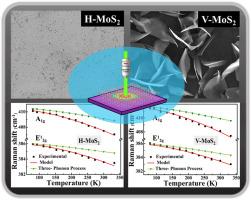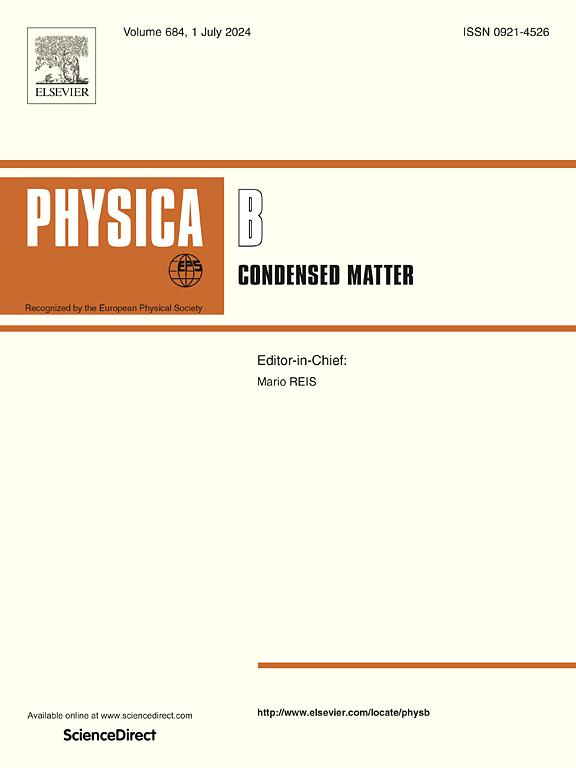Orientation dependent thermal behavior of CVD grown few layer MoS2 films
IF 2.8
3区 物理与天体物理
Q2 PHYSICS, CONDENSED MATTER
引用次数: 0
Abstract
Differently oriented supported MoS2 nanostructures are ideal candidates for various electronic and optoelectronic applications, with their performance influenced by thermal properties and is still not comprehensively studied. In this paper, we study the temperature-dependent Raman response of CVD synthesized horizontally (H-MoS2) and vertically (V-MoS2) oriented MoS2 grown over SiO2-Si substrate from 80 to 333 K. The V-MoS2 shows a relatively higher peak shift, attributed to its smaller contact area with the substrate, giving it a suspended-like characteristic. Then to facilitate quantitative understanding of the non-linear temperature dependency in differently oriented MoS2 films, a physical model incorporating both volume and thermal effect is employed. The greater four-phonon contribution for in-plane mode of H-MoS2 compared to V-MoS2 may be attributed to the larger contact area with the substrate, leading to higher-order scattering due to interface formation. Our study can be leveraged for understanding thermal response in future applications of low-power thermoelectric and optoelectronic devices.

CVD 生长的几层 MoS2 薄膜的取向相关热行为
不同取向支撑的 MoS2 纳米结构是各种电子和光电应用的理想候选材料,其性能受热特性的影响,但目前尚未对其进行全面研究。本文研究了在二氧化硅-硅衬底上生长的 CVD 合成水平取向 MoS2(H-MoS2)和垂直取向 MoS2(V-MoS2)在 80 至 333 K 温度范围内随温度变化的拉曼响应。为了便于定量理解不同取向 MoS2 薄膜的非线性温度依赖性,我们采用了一个包含体积效应和热效应的物理模型。与 V-MoS2 相比,H-MoS2 的面内模式具有更大的四相贡献,这可能是由于它与基底的接触面积更大,从而导致界面形成的高阶散射。我们的研究可用于了解未来低功率热电和光电器件应用中的热响应。
本文章由计算机程序翻译,如有差异,请以英文原文为准。
求助全文
约1分钟内获得全文
求助全文
来源期刊

Physica B-condensed Matter
物理-物理:凝聚态物理
CiteScore
4.90
自引率
7.10%
发文量
703
审稿时长
44 days
期刊介绍:
Physica B: Condensed Matter comprises all condensed matter and material physics that involve theoretical, computational and experimental work.
Papers should contain further developments and a proper discussion on the physics of experimental or theoretical results in one of the following areas:
-Magnetism
-Materials physics
-Nanostructures and nanomaterials
-Optics and optical materials
-Quantum materials
-Semiconductors
-Strongly correlated systems
-Superconductivity
-Surfaces and interfaces
 求助内容:
求助内容: 应助结果提醒方式:
应助结果提醒方式:


